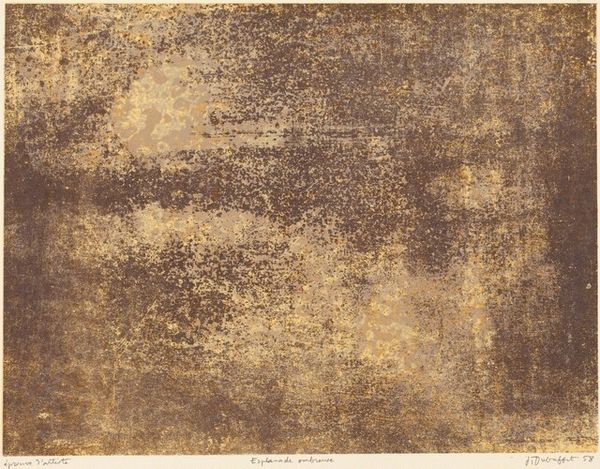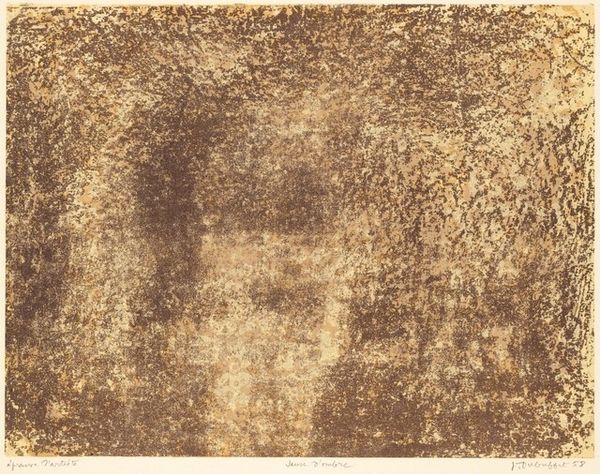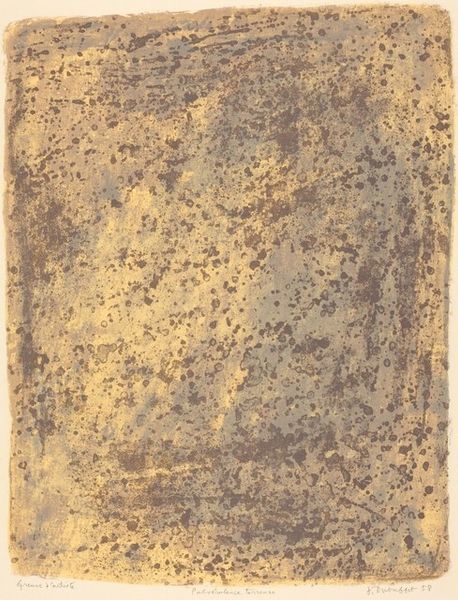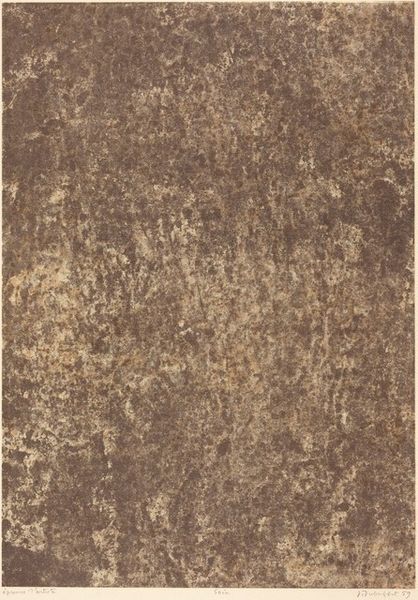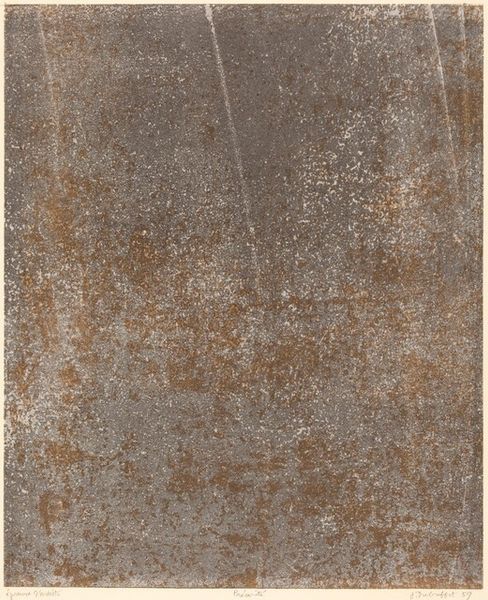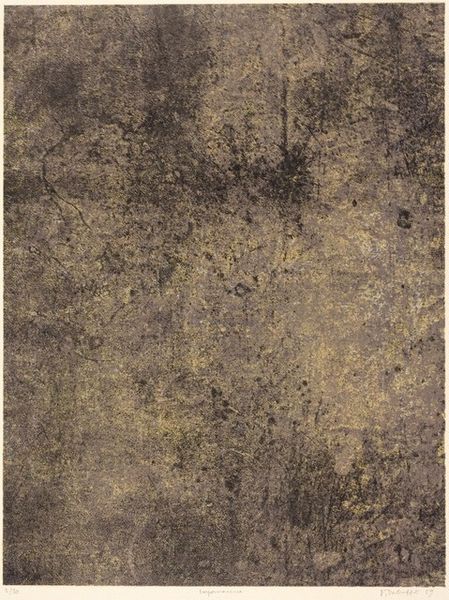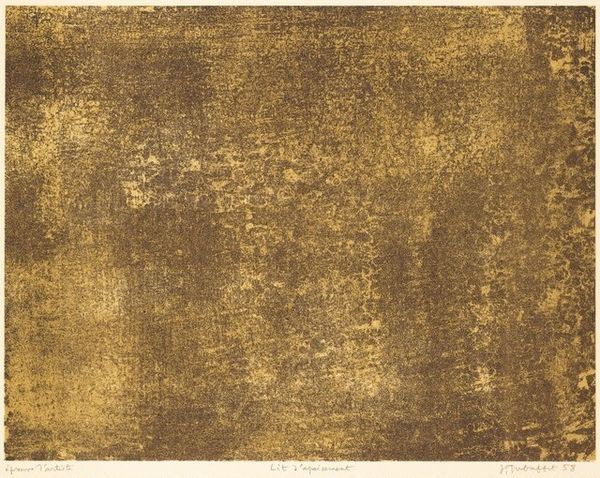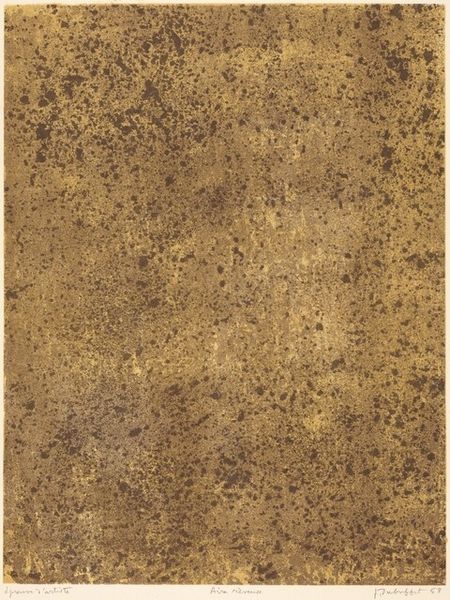
matter-painting, print
#
matter-painting
# print
#
organic pattern
#
art-informel
#
abstraction
Copyright: National Gallery of Art: CC0 1.0
Editor: We're looking at "Or et ombre" by Jean Dubuffet, created in 1958, a matter painting that feels both ancient and incredibly modern. The textured surface and the play of gold and shadow give it a powerful, almost primordial feel. What stands out to you in this piece? Curator: I see Dubuffet challenging the traditional notions of beauty and materiality that were prevalent in the post-war era. The work belongs to the Art Informel movement which questioned the established artistic norms. What materials did he use, and what does their roughness suggest? Editor: Well, it’s described as a "matter painting," so I imagine the textures come from thick applications of paint, perhaps mixed with other materials? To me, the roughness reads like a statement, almost like an anti-aesthetic, challenging what's considered "fine art." Curator: Precisely. Think about the social context – the late 1950s, a period of reconstruction but also growing social anxieties. Dubuffet's use of such base materials, rejecting elegance for something raw and immediate, speaks to a wider rejection of bourgeois values. Does the title "Gold and Shadow" play into that at all? Editor: It’s a contrast, right? Gold being precious, shadow suggesting darkness or the hidden. Maybe it represents the unseen labor or the social costs beneath the surface of prosperity. It feels very critical. Curator: Absolutely. This tension between "gold" and "shadow" might also reflect the dialectical relationships inherent in societal structures – the power dynamics, the visible and the invisible. Art Informel can be understood as art that embraces an-Other beauty— challenging entrenched concepts of value. What would you take away as a lasting insight from this conversation? Editor: How deeply intertwined art can be with the social and political climate in which it was made; how a work can embody resistance and critical commentary through its very materials and textures. Curator: Indeed, Dubuffet encourages us to look beyond the surface, to find meaning in the seemingly mundane, and to challenge the status quo through artistic expression.
Comments
No comments
Be the first to comment and join the conversation on the ultimate creative platform.
